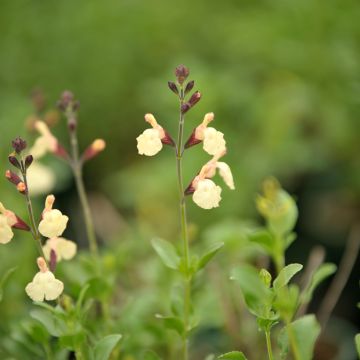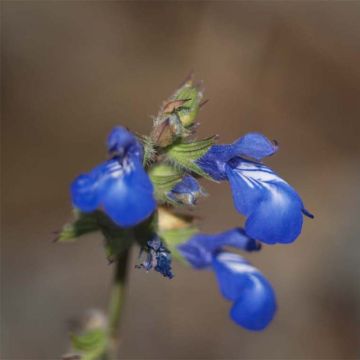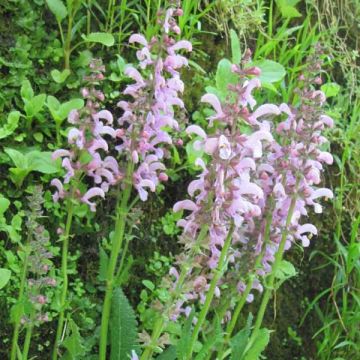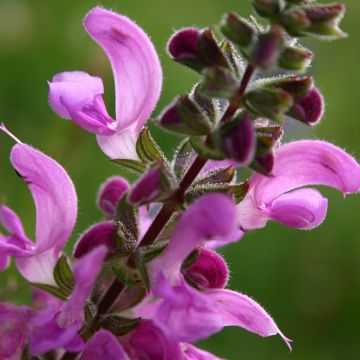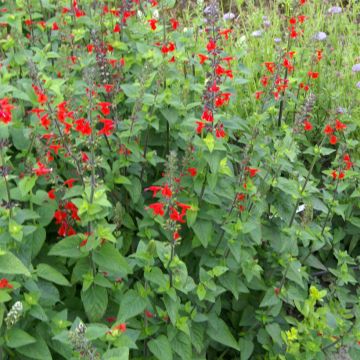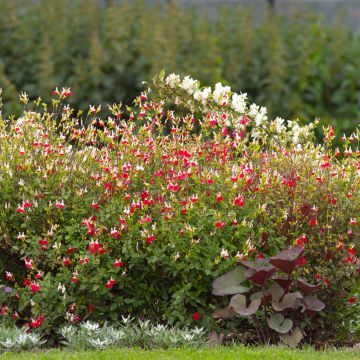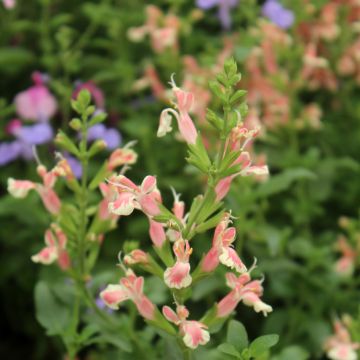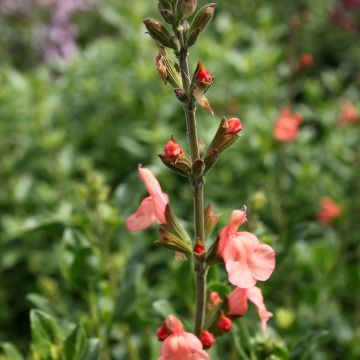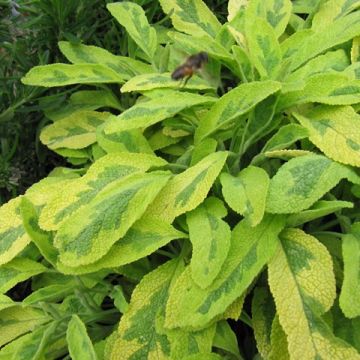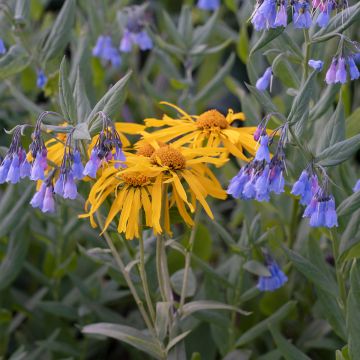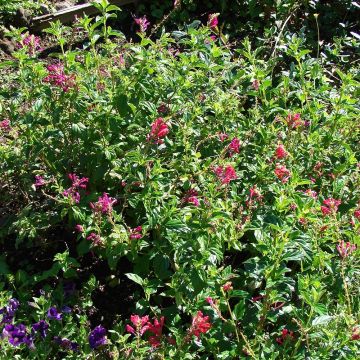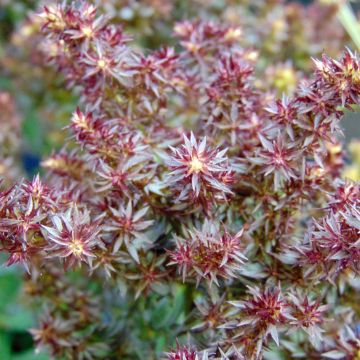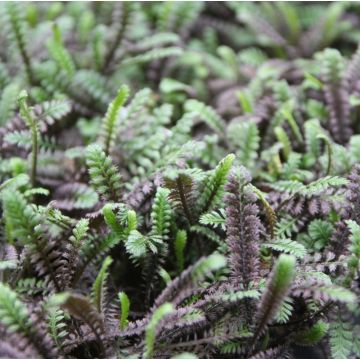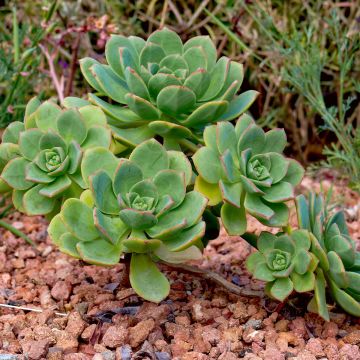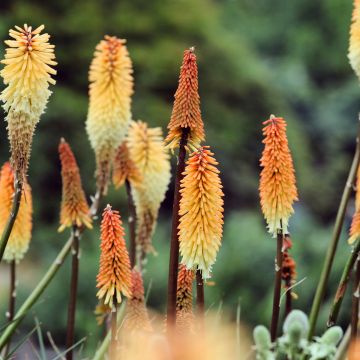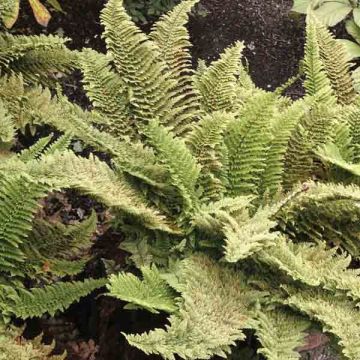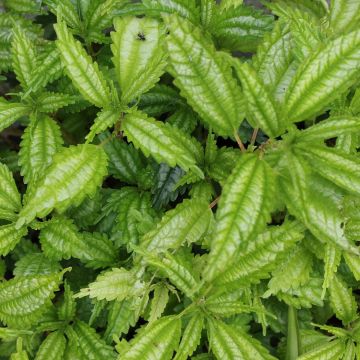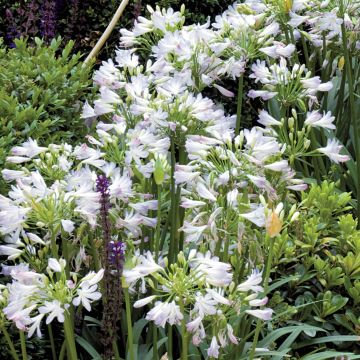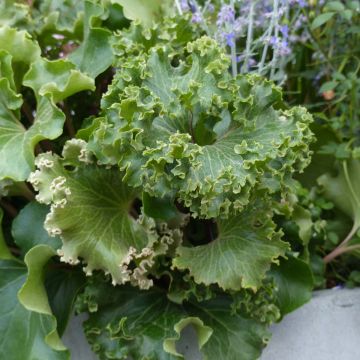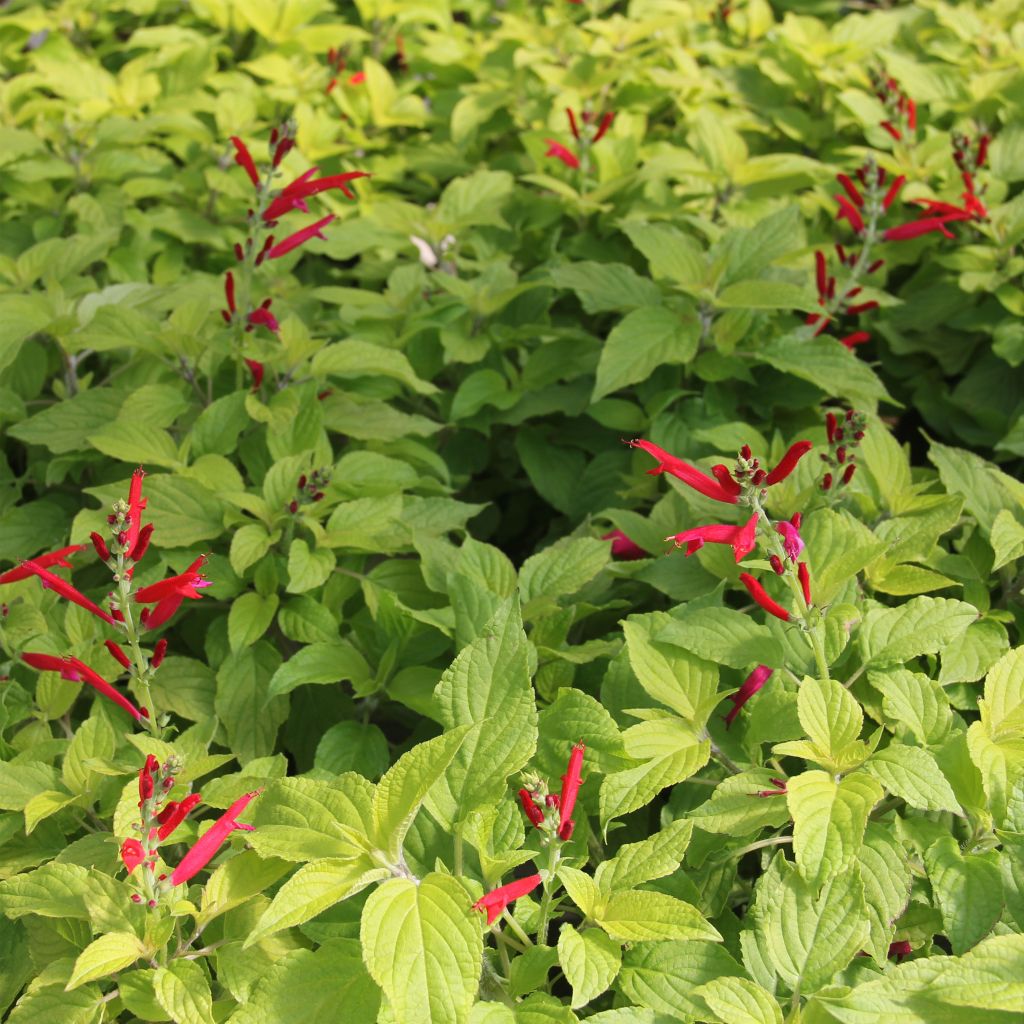

Salvia elegans Golden Delicious
Salvia elegans Golden Delicious
Salvia elegans Golden Delicious
Pineapple Sage, Pineapple-scented Sage
This item cannot be shipped to the selected country
Delivery charge from €5.90
Delivery charge from €5.90
Delivery to Corse prohibited
More information
Schedule delivery date,
and select date in basket
This plant carries a 6 months recovery warranty
More information
We guarantee the quality of our plants for a full growing cycle, and will replace at our expense any plant that fails to recover under normal climatic and planting conditions.
From €5.90 for pickup delivery and €6.90 for home delivery
Express home delivery from €8.90.
From €5.90 for pickup delivery and €6.90 for home delivery
Express home delivery from €8.90.
Delivery to Corse prohibited: UE law prohibits the import of this plant from mainland France to Corse as part of the fight against Xylella fastidiosa. Please accept our sincere apologies.
More information
Does this plant fit my garden?
Set up your Plantfit profile →
Description
The Salvia elegans 'Golden Delicious' is a stunning and rare perennial plant. This fabulous undershrub is a natural mutation of the Pineapple Sage. Its flavourful and fragrant foliage emerges green-yellow and gradually turns bright yellow over time. In autumn its blood-red flowers explode like fireworks, with large scarlet flower spikes splashing the golden mass of its foliage. While this plant is not very hardy, it is robust and victorious in milder climes, in well-drained or even occasionally dry soil. This collector's plant will find a place in sunny flower beds, in aromatic gardens, or in a large pot to be stored over winter in cold climates.
The Salvia elegans, like all salvias, belongs to the family of Lamiaceae or Labiates. This perennial with creeping rhizomes is native to Mexico and Guatemala, where it colonises pine and oak forests at medium altitudes, which explains its low hardiness. 'Golden Delicious' spontaneously appeared in 2001 in the United States, in the heart of a bouquet of classic pineapple salvias. The plant forms a beautiful clump with a spreading habit composed of semi-woody and hairy stems bearing triangular, rich-to-the-touch, bright yellow leaves with a surprising pineapple scent and flavour. It reaches a height of 80 cm to 1 m (31.5 in to 3 ft 4 in), sometimes more under the right conditions, with a minimum diameter of 80 cm (31.5 in) if not destroyed by frost. The nectar-rich and honey-scented blooms are also flavourful. Characteristic of short-day plants, flowering occurs in October or November, then in March, in open ground in mild climates or in a cold frame in cold climates. The flower spikes are upright and branched. They have slightly purplish square-sectioned stems bearing long and slender scarlet tubular flowers, surrounded at the base by a bright yellow sheathing calyx. The hardiness of this species does not exceed -7°C (19°F) in a protected position and in dry soil during winter.
The obvious ornamental qualities of the 'Golden Delicious' Pineapple Sage make it an exceptional flowerbed plant. In nature Pineapple Sage grows in rather moist but well-drained soils, under a mountainous but warm climate. 'Golden Delicious', generous and unique, will bring a lot of joy to late-season perennial or annual flower beds, in the company of silvery-leaved shrubby artemisias, perennial chrysanthemums, or to warm up the last roses in the garden. Placed in front of a small winged euonymus (Eunymus alatus compactus), smoke bush (Cotinus), or prunifolia spirea, its brilliant flowering and dazzling foliage will blend with their autumn foliage to create a veritable landscape of fire. On the terrace, place it in a large pot to admire it up close, enjoy its show, have it within reach when cooking, and store it away from severe frost during winter.
Culinary idea: Pineapple sage leaves can be used fresh or frozen in ice cubes. They are used in exotic dishes to enhance pork, duck or veal, but also in sweet and sour recipes. They make excellent herbal teas. The flowers are also edible and can be used to flavour desserts, add a colourful touch to fruit salads, or brighten up cocktails, pastries, and sorbets.
Report an error about the product description
Salvia elegans Golden Delicious in pictures


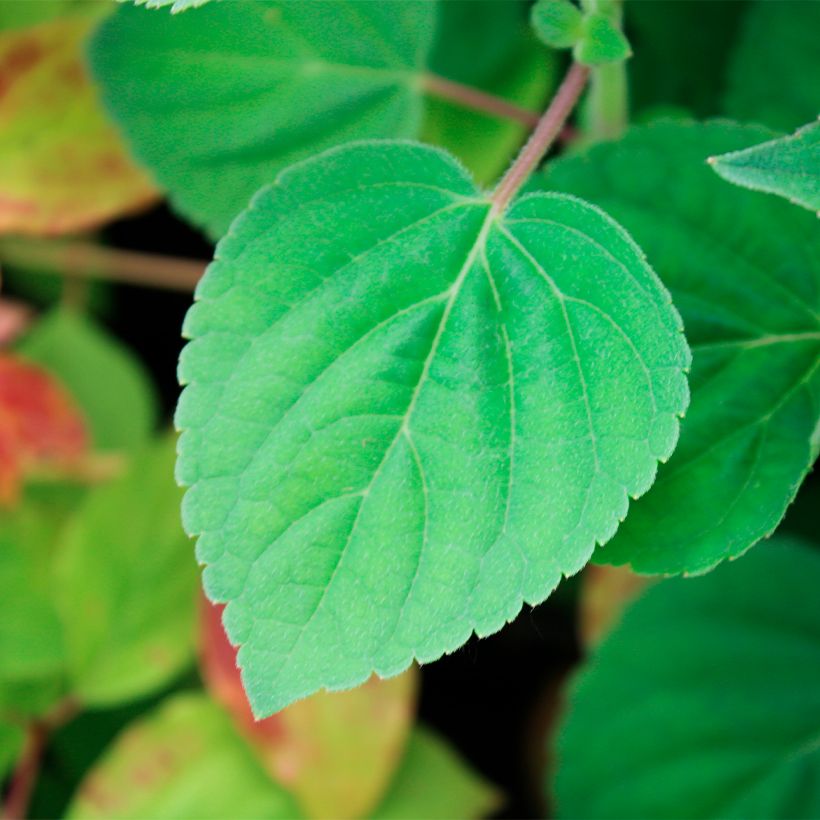

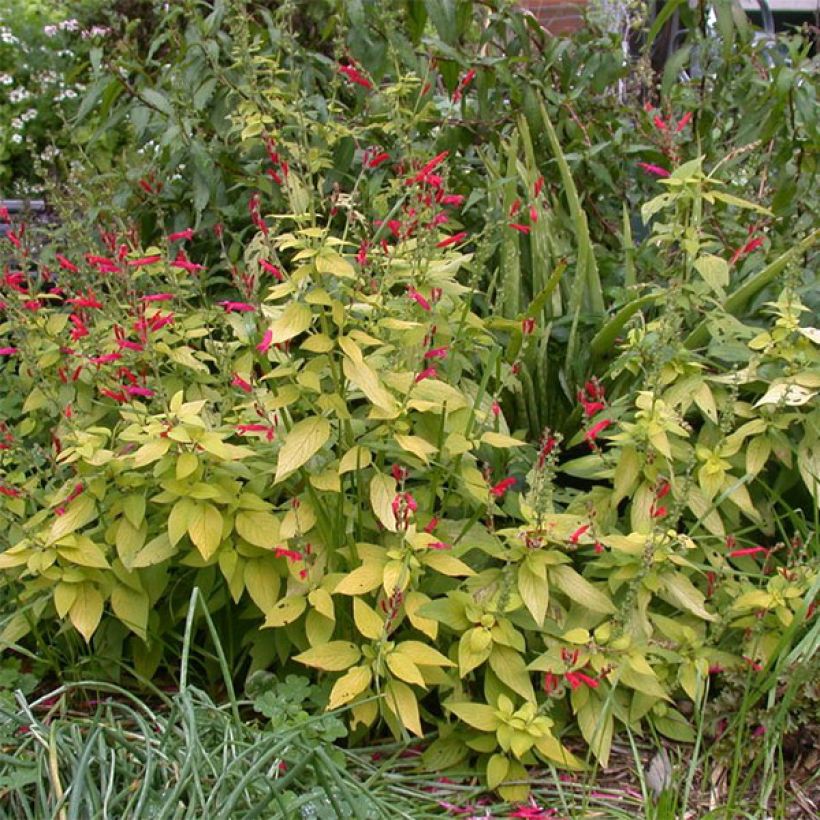

Flowering
Foliage
Plant habit
Botanical data
Salvia
elegans
Golden Delicious
Lamiaceae
Pineapple Sage, Pineapple-scented Sage
Cultivar or hybrid
Other Salvia - Sage
Planting and care
Plant Salvia elegans after spring frosts in a cold climate or in September-October in warm climates. Undemanding in terms of the soil, it does however require it to be humus-rich, light, not too poor and to not dry out completely in order to support flowering. This plant thrives in sunny sites or at a stretch in partial shade, where it will tend to lean to seek out light. It requires regular watering in case of drought to flower abundantly. In poor soil, incorporate a little well-rotted compost or leaf mould. Mulch it in winter in colder regions, and isolate it from the cold and rain as much as possible. Install it in the most sheltered corner of the garden, on a sandy slope, or in any substrate that does not retain moisture which would be fatal to it in winter. It tolerates pot cultivation wonderfully, allowing the most continental gardeners to be able to store it over winter.
Pot cultivation:
Place Salvia elegans in full sun from May and store it in a cool, frost-free place in autumn. A well-ventilated site is important for the plant's health. Its foliage can be subject to attacks from scale insects indoors or in a greenhouse. During winter watering should be greatly reduced. Cut back the vegetation hard in spring.
In milder regions, such as mild oceanic or Mediterranean climates, outdoor cultivation is entirely possible. The soil should remain moist in summer, and the plant should be frequently watered during the growing season. Prune it back in autumn and cover the stump with straw and a weighted waterproof sheet to protect the plant from the combination of cold and humidity.
Planting period
Intended location
Care
-
, onOrder confirmed
Reply from on Promesse de fleurs
Rare and collectible perennials
Haven't found what you were looking for?
Hardiness is the lowest winter temperature a plant can endure without suffering serious damage or even dying. However, hardiness is affected by location (a sheltered area, such as a patio), protection (winter cover) and soil type (hardiness is improved by well-drained soil).

Photo Sharing Terms & Conditions
In order to encourage gardeners to interact and share their experiences, Promesse de fleurs offers various media enabling content to be uploaded onto its Site - in particular via the ‘Photo sharing’ module.
The User agrees to refrain from:
- Posting any content that is illegal, prejudicial, insulting, racist, inciteful to hatred, revisionist, contrary to public decency, that infringes on privacy or on the privacy rights of third parties, in particular the publicity rights of persons and goods, intellectual property rights, or the right to privacy.
- Submitting content on behalf of a third party;
- Impersonate the identity of a third party and/or publish any personal information about a third party;
In general, the User undertakes to refrain from any unethical behaviour.
All Content (in particular text, comments, files, images, photos, videos, creative works, etc.), which may be subject to property or intellectual property rights, image or other private rights, shall remain the property of the User, subject to the limited rights granted by the terms of the licence granted by Promesse de fleurs as stated below. Users are at liberty to publish or not to publish such Content on the Site, notably via the ‘Photo Sharing’ facility, and accept that this Content shall be made public and freely accessible, notably on the Internet.
Users further acknowledge, undertake to have ,and guarantee that they hold all necessary rights and permissions to publish such material on the Site, in particular with regard to the legislation in force pertaining to any privacy, property, intellectual property, image, or contractual rights, or rights of any other nature. By publishing such Content on the Site, Users acknowledge accepting full liability as publishers of the Content within the meaning of the law, and grant Promesse de fleurs, free of charge, an inclusive, worldwide licence for the said Content for the entire duration of its publication, including all reproduction, representation, up/downloading, displaying, performing, transmission, and storage rights.
Users also grant permission for their name to be linked to the Content and accept that this link may not always be made available.
By engaging in posting material, Users consent to their Content becoming automatically accessible on the Internet, in particular on other sites and/or blogs and/or web pages of the Promesse de fleurs site, including in particular social pages and the Promesse de fleurs catalogue.
Users may secure the removal of entrusted content free of charge by issuing a simple request via our contact form.
The flowering period indicated on our website applies to countries and regions located in USDA zone 8 (France, the United Kingdom, Ireland, the Netherlands, etc.)
It will vary according to where you live:
- In zones 9 to 10 (Italy, Spain, Greece, etc.), flowering will occur about 2 to 4 weeks earlier.
- In zones 6 to 7 (Germany, Poland, Slovenia, and lower mountainous regions), flowering will be delayed by 2 to 3 weeks.
- In zone 5 (Central Europe, Scandinavia), blooming will be delayed by 3 to 5 weeks.
In temperate climates, pruning of spring-flowering shrubs (forsythia, spireas, etc.) should be done just after flowering.
Pruning of summer-flowering shrubs (Indian Lilac, Perovskia, etc.) can be done in winter or spring.
In cold regions as well as with frost-sensitive plants, avoid pruning too early when severe frosts may still occur.
The planting period indicated on our website applies to countries and regions located in USDA zone 8 (France, United Kingdom, Ireland, Netherlands).
It will vary according to where you live:
- In Mediterranean zones (Marseille, Madrid, Milan, etc.), autumn and winter are the best planting periods.
- In continental zones (Strasbourg, Munich, Vienna, etc.), delay planting by 2 to 3 weeks in spring and bring it forward by 2 to 4 weeks in autumn.
- In mountainous regions (the Alps, Pyrenees, Carpathians, etc.), it is best to plant in late spring (May-June) or late summer (August-September).
The harvesting period indicated on our website applies to countries and regions in USDA zone 8 (France, England, Ireland, the Netherlands).
In colder areas (Scandinavia, Poland, Austria...) fruit and vegetable harvests are likely to be delayed by 3-4 weeks.
In warmer areas (Italy, Spain, Greece, etc.), harvesting will probably take place earlier, depending on weather conditions.
The sowing periods indicated on our website apply to countries and regions within USDA Zone 8 (France, UK, Ireland, Netherlands).
In colder areas (Scandinavia, Poland, Austria...), delay any outdoor sowing by 3-4 weeks, or sow under glass.
In warmer climes (Italy, Spain, Greece, etc.), bring outdoor sowing forward by a few weeks.

































